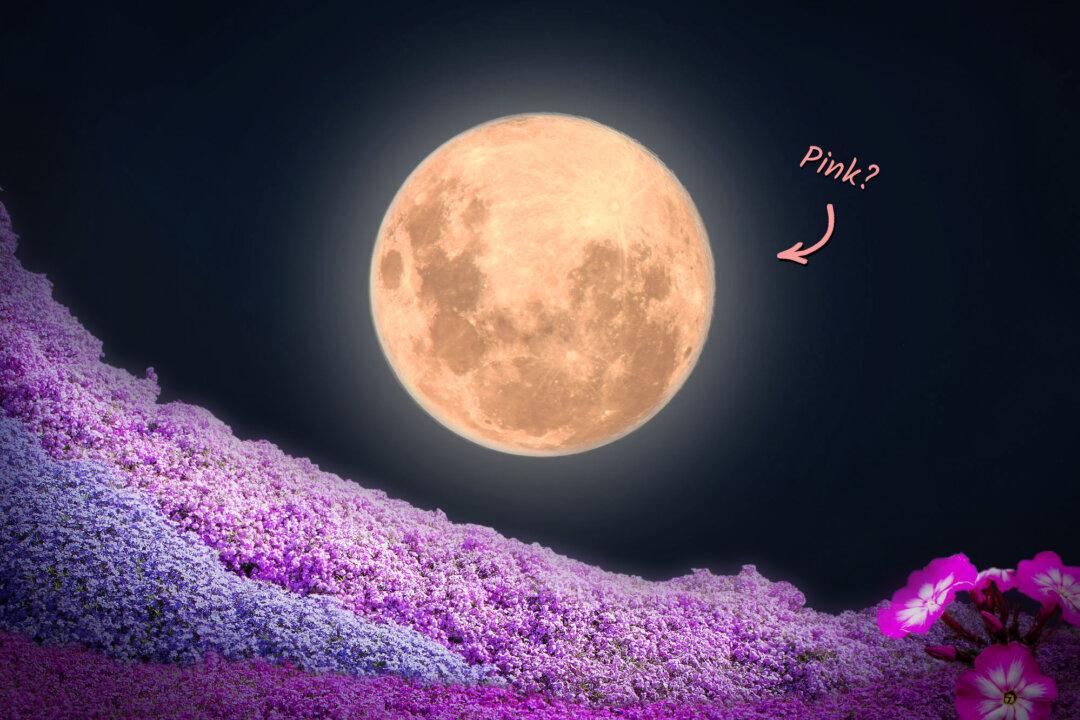In the old days, wives would crack the bones of leftovers, sap was turned into sugar, and sucker fish were hooked—all in abundance around the time of April’s Full Pink Moon. Folklore abounds in American lunar heritage. This coming April full moon is no different.
After this last new moon crossed the sun during the recent total solar eclipse, watched by millions in North America on April 8, the current lunar cycle now continues waxing toward peak fullness, to fall on April 23. On that date, the moon will appear fullest at 7:49 p.m. EDT.






